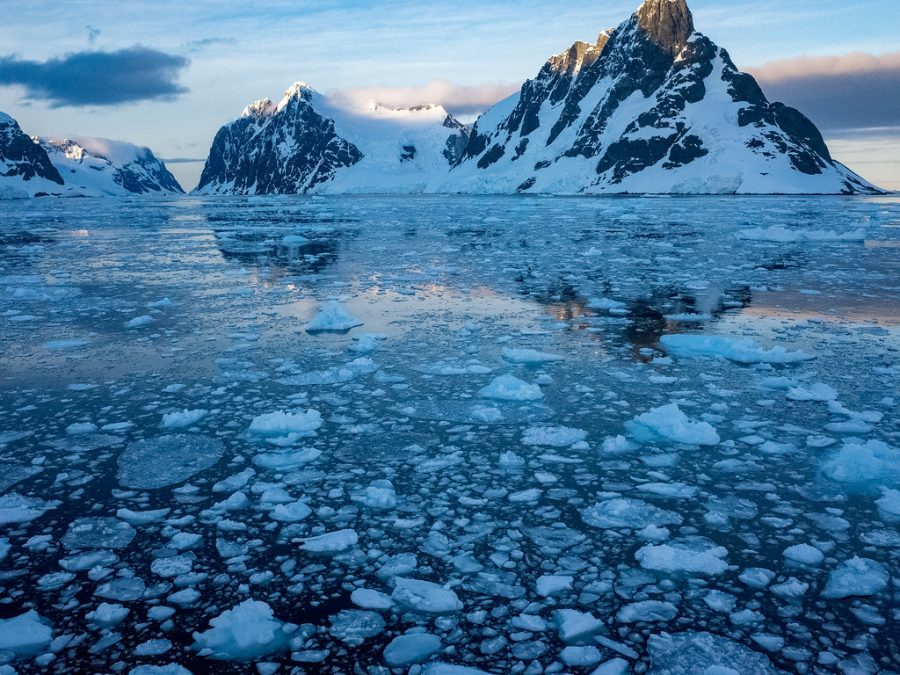Secret subterranean habitat uncovered in Antarctica
June 25, 2022
Nearly two weeks ago, New Zealand scientists discovered a previously unexplored ecosystem about 1,640 feet beneath the Antarctic’s Larsen Ice Shelf – an enormous floating ice sheet connected to the Antarctic’s east coast. The incredible thing was that scientists did not expect to find this form of life that deep below the icy surface.
Experts and researchers were aware of a network of hidden freshwater lakes and rivers below Antarctic ice sheets, but had not yet directly investigated it. This fact makes the New Zealand team’s discovery even more exhilarating and significant, especially as their goal was not to seek or explore the aforementioned hidden water bodies beneath Antarctic ice sheets.
“We were jumping up and down because having all those animals swimming around our equipment means that there’s clearly an important ecosystem there,” Craig Stevens, one of the scientists on this mission said.
The initial objective of this scientific mission was to investigate the role an estuary–a body of water where one or multiple rivers flow into it–would play in climate-induced ice shelf melt. Instead, when the research team drilled down the ice, they discovered an ecosystem occupied by shrimp-like creatures.
Stevens admitted the surprising nature of their discovery and asserted that the researchers originally thought their camera was faulty, “but when the focus improved, [they] noticed a swarm of arthropods around 5mm in size.”
Due to the unintentional nature of the scientists’ investigation, it evoked a sense of inundation. “Getting to observe and sample this river was like being the first to enter a hidden world,” Huw Horgan, the project’s lead, said.
This discovery is symbolic because it supported the hypotheses of experts who recognized the existence of hidden rivers below the Antarctic Ice.
This finding is an important reminder that humans are not fully acquainted with everything this Earth has to offer. A significant portion of the world’s geography may have been discovered, but there is still a lot to learn.
Ironically, most focus on looking outside the Earth for new discoveries but there is so much yet to be uncovered on Earth itself. Discoveries dealing with unfamiliarity never fail to bring about thrill and excitement, regardless of whether the finding was on Earth or outside of Earth.
For now, the scientists have left instruments in the Antarctic river where the ecosystem was uncovered, to observe the creatures’ behavior.
Earth existed long before humans did; it is estimated to be about 4.5 billion years old, while the modern form of humans evolved about 200,000 years ago, with civilization as we know it being about 6,000 years old. With this unimaginably huge age difference, it is safe to say that the Earth knows more about humans than what humans know about Earth.
With that, it is uncertain just how many other hidden ecosystems and unknown species there are left to be discovered. The decision to reveal these enigmas falls on the Earth.








Alejandra • Oct 7, 2022 at 2:06 pm
I must say, I really enjoyed reading this article. Maybe by now, you have heard of the conspiracy theories going on about Russia and China breaking the Antarctic treaty and exposing a hidden civilization in Antarctica. I have read a few other articles that have completely tried to disprove that they had left. We still have no proof of that. But this proves that they wrote it without doing their research, in regards to what is underneath the ice. They claimed there was no water or caves underneath the ice sheets in Antarctica. We must always be in pursuit of the hidden truth. Also if any editors see this comment at the end of the article you misspelled “leftto”. <3